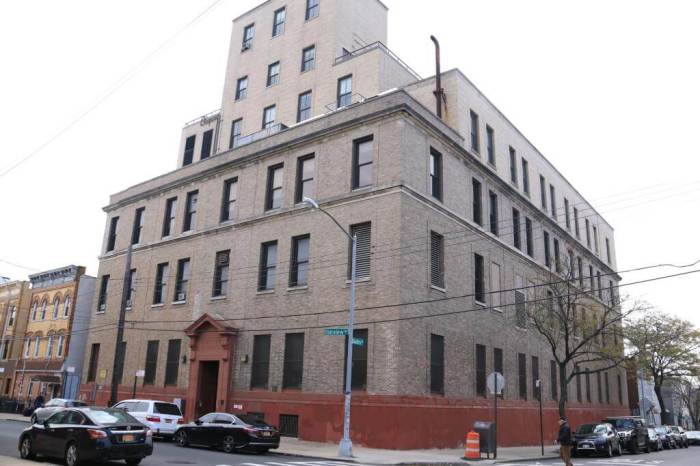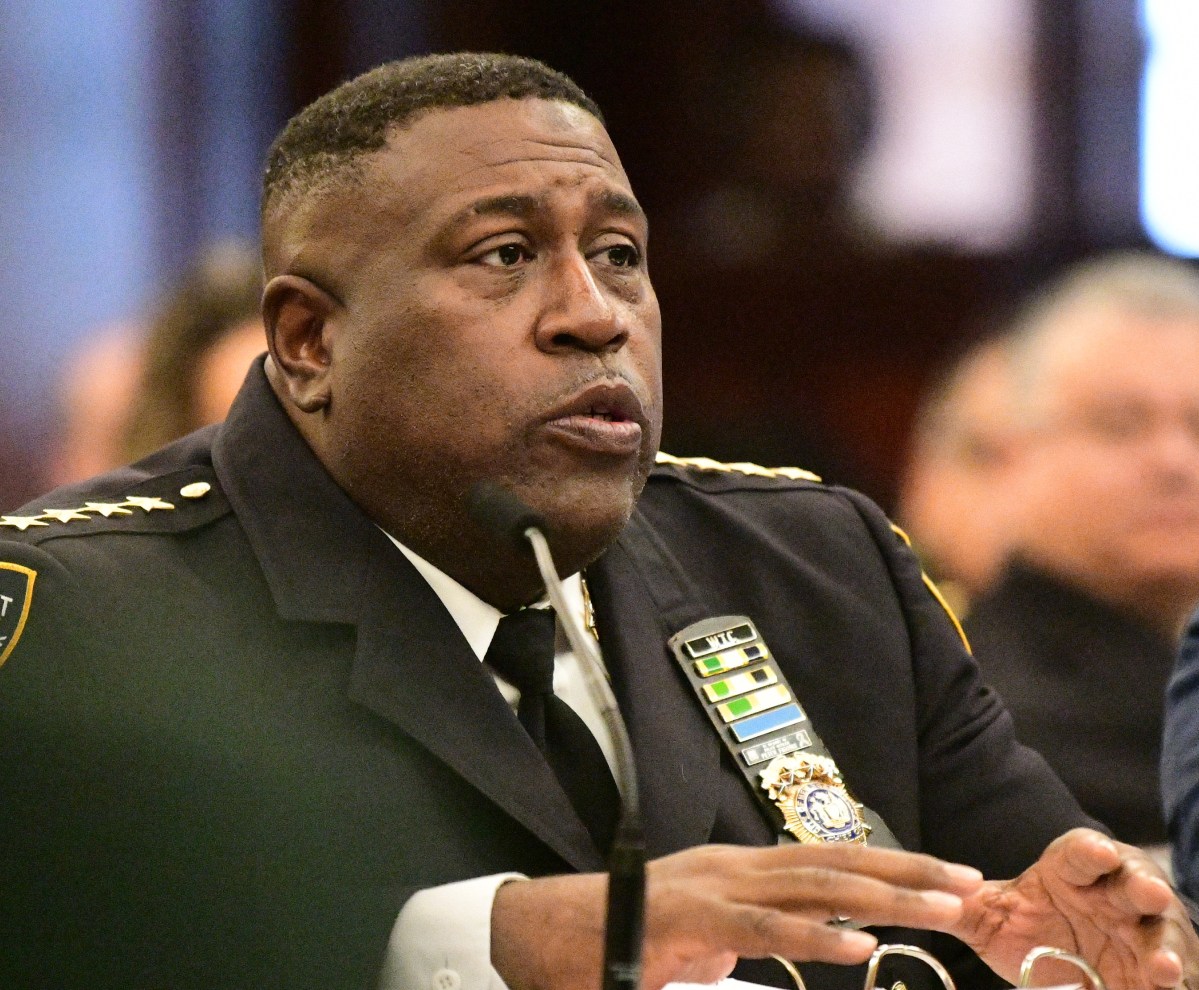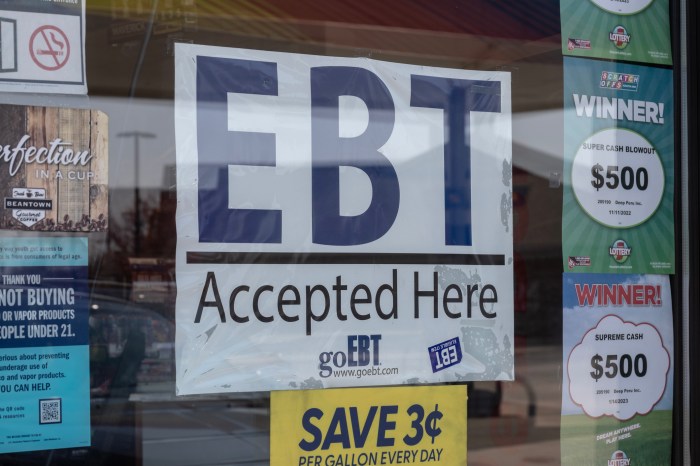Rockaway residents are facing a wave of anxiety over the upcoming four-month shutdown of the A train, the only subway line connecting the peninsula to the mainland.
Locals packed a town hall on Thursday evening at the YMCA on Beach 73rd Street, bemoaning what will be four months of hardship between January and May for a peninsula where residents already face some of the nation’s longest commutes, and many feel they are generally thought of last by city and state government.
“It’s already a long commute, and there’s a lot of ridership, and rush hour is very busy to begin with,” said Jenny Sharp, a five-year resident of the Rockaways. “And you don’t give very much warning? That’s not a great recipe for the entire peninsula who are already doing pretty long commutes to get into the city.”
Rockaway locals are used to lengthy, inconvenient closures of their trains. The elevated Rockaway line was severely damaged during Hurricane Sandy, necessitating a full seven months of closure for emergency repairs. Weekend closures have been frequent since then, but a closure of this magnitude has not been seen in the decade-plus since Sandy.
Why is it closing this time?
The MTA aims to upgrade the line’s infrastructure to be more resilient to storms like Sandy, which are set to become more frequent and more intense due to climate change. The most important part of the current $393 million project, which will continue in bits and pieces through 2026, is the Hammels Wye viaduct, where the A and S trains split to head either to the western or eastern sections of the peninsula.
The 1,600-foot viaduct is decades old and showing serious deterioration, necessitating a complete demolition and replacement with a new structure designed to stand for 50 years, the MTA says. Needless to say, trains cannot run from the Rockaways to the mainland while that’s going on.
“We’re gonna be totally demolishing it. There will be air; I cannot provide you service during that time,” said Deirdre Harvey, the MTA’s project CEO for the Rockaway line project. “It’s had some wear and tear over the years, and we’ve tried patching here and there. But that’s no longer sustainable. This needs rehabilitation.”
At the same time, the MTA intends to gut renovate the electrical and mechanical components on the South Channel Bridge, the swing bridge carrying A trains from Broad Channel to the Rockaways, and to repair concrete encasing the steel skeleton on the viaduct carrying trains within the peninsula.
Free shuttle buses will run on two routes: express from Howard Beach to Far Rockaway and local in a triangle formation between Howard Beach, Broad Channel, Beach 90th Street, and Beach 67th Street. The Rockaway Park Shuttle will run altered service along the length of the peninsula during the shutdown and will be fare-free, while the Long Island Rail Road will cost just $2.75 each way with the purchase of a two-way ticket at Far Rockaway to any destination, including Atlantic Terminal, Grand Central Madison, and Penn Station.
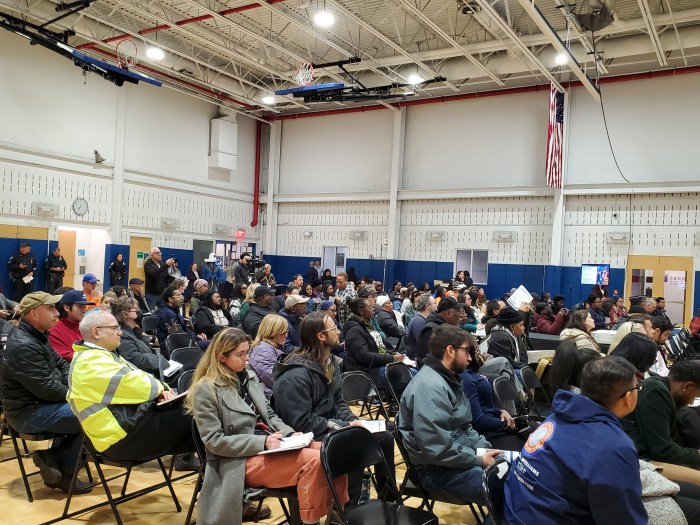
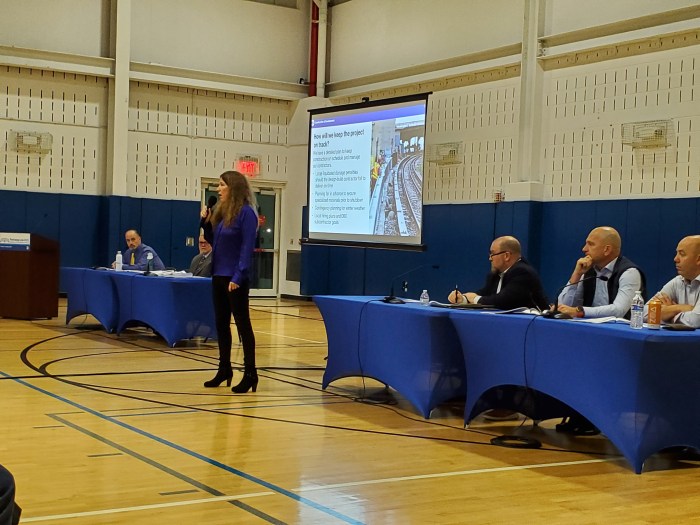
‘The service out here is very horrible’
Few Rockaway residents, who are well familiar with Mother Nature’s tempestuous personality, dispute the necessity of the project. But that doesn’t make the disruption any easier to weather, nor assuage any frustration with the MTA’s handling of the closure.
Alexis Foote, 41, a Beach 59th Street resident, works the overnight shift at New York Presbyterian Hospital, near the other end of the A line in Washington Heights. Her punishing commute is already about two hours long; having already faced warnings from her boss for tardiness caused by her train, she is considering drastic measures during the shutdown.
“I’m gonna have to go sleep at the job,” said Foote. “For real. Because the service out here is very horrible. From the time I was 15 years old, there has always been one Far Rockaway train to two Lefferts trains.”
She also questioned the MTA’s stated rationale for undertaking the repairs in the dead of winter: in order to avoid disruption to the summer beach season, when beachgoers from the rest of the city flood the peninsula and local businesses see their highest revenues.
“You couldn’t do this during the summer, to inconvenience the beachgoers? You have to inconvenience the Black and brown people that live on this side,” said Foote. “Why would you put this project in the middle of winter, when it gets severely cold out here?”
When officials started reading questions submitted by residents, a huge number asked why the MTA was not adding more express buses on the QM16 and QM17 routes during the shutdown. They were joined by Selvena Brooks-Powers, the local Council Member who chairs the Transportation Committee and sponsored the town hall.
Alan Foster, MTA’s acting director of rail network planning, said the agency simply does not have enough buses. At rush hour, the buses leave either Rockaway or Midtown Manhattan at intervals of between 15 and 30 minutes in length, per its posted schedule.
Foster responded similarly to requests for shuttle buses to run all the way to the Rockaway Boulevard stop in Ozone Park. Here, A trains coming from both the Rockaways and Lefferts Boulevard converge, meaning more trains arrive than at the Howard Beach terminus for shuttle buses.
“We have to provide service to Howard Beach. There are some people who are traveling to Howard Beach, particularly if they work at the airport or are taking a plane from the airport, so we need to run a shuttle bus from the Rockaways to Howard Beach,” said Foster. “If we were to run an additional nonstop bus from the Rockaways to Rockaway Boulevard, that would require additional buses that we just don’t have.”
The agency has also taken flak over communication regarding the shutdown, especially as compared to the shutdown of the G this summer and the near-shutdown of the L in 2019. The MTA noted it has been engaging local groups like community boards, civic groups, and tenant associations for the past two years. Still, many residents said they hadn’t heard about the shutdown until it was reported in the media this month.
“A lot of residents had heard whispers, but nothing was really set in stone,” said Camila Morales, a Beach 69th Street resident and co-founder of a local art collective, who noted her frustration with an answer from the MTA about its two-year outreach process. “I’m like, how did you do that? I live here, I’m well-informed, and I did not really know.”
Aside from her work on the peninsula, Morales also has a day job in Brooklyn and teaches a night class at New York University in Manhattan; commuting to that job in the dark already makes her feel relatively unsafe. She says she is considering buying a car for the first time since moving to New York.
“I will be deeply impacted to the point where I will probably take out loans and buy a car, because I just don’t think that the MTA is gonna offer the solution,” said Morales. “I never wanted to purchase a car to begin with, but leaving this meeting, I just feel like it’s the best solution.”


